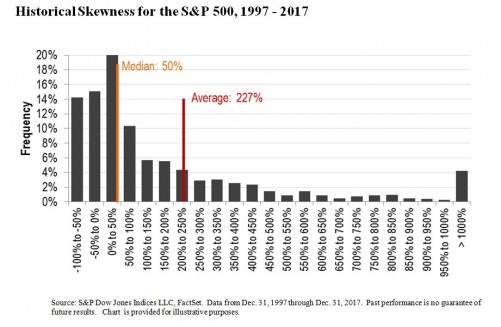We often hear of the need to address risks resulting from environmental issues in financial markets. Research by The Economist Intelligence Unit, “The Cost of Inaction,” estimates the value at risk from climate change impacts as ranging from USD 4.2 trillion to USD 43 trillion between now and the end of the century. Over time, as climate risks become more financially material, one would expect markets to positively reward companies that are taking steps to reduce their environmental impact.
At the end of 2016, I was delighted to announce the winners of an open research competition convened by the United Nations Environment Programme (UNEP) Finance Initiative Portfolio Decarbonization Coalition and the Sovereign Wealth Fund Research Initiative. The winners, a collaboration led by Soh Young In, Ashby Monk (Stanford University), and Ki Young Park (Yonsei University), received funding for a groundbreaking study into the correlation between financial performance and climate risk. Trucost donated its entire environmental performance dataset to the study.
Over the past 18 months, the research team assessed 74,486 observations of U.S. firms from January 2005 to December 2015. The study, “Is Being Green Rewarded by the Market?: An Empirical Investigation of Decarbonization Risk and Stock Returns,” discovered the following.
- An investment strategy of “long carbon-efficient firms and short carbon-inefficient firms” would earn abnormal returns of 3.5%-5.4% per year.
- Carbon-efficient firms are those with higher firm value measured in Tobin’s q, higher net income relative to invested capital (i.e., ROI), lower ROA, higher cash flow, and higher coverage ratio.
- The statistical association of carbon efficiency with ROA, cash flow, and coverage ratio increases after 2009.
- Findings are not driven by a small set of industries, variations in oil price, or changing preferences of bond investors caused by low interest rates regime starting with the financial crisis.
- Extra returns cannot be fully explained by well-known risk factors, such as market size, value, momentum, operating profitability, and investment.
Improving Transparency in Financial Markets
Climate change is increasingly recognized as a global imperative and many assets are now exposed to physical, regulatory, and reputational risks. The EU High-Level Expert Group on Sustainable Finance, of which I am a member, has advised policy makers to integrate environmental, social, and governance (ESG) factors in the fiduciary duty of financial institutions. The Financial Stability Board’s Task Force on Climate-related Financial Disclosures has proposed enhanced reporting requirements for both companies and financial institutions. Good disclosure on climate risks will be increasingly important if market participants are to integrate such information into the investment process.
To improve transparency in financial markets, S&P Dow Jones Indices now publishes Trucost’s carbon metrics for equity indices on its website and Trucost has helped financial institutions with over USD 27 trillion in assets to identify environmental risks and opportunities across multiple asset classes.
Growing Evidence of the “Green Reward”
Some market participants have expressed concerns that low-carbon investment could lead to poor financial outcomes. The Stanford and Yonsei research study illustrates that this does not have to be the case, and in fact, low-carbon versions of the S&P 500® were found to outperform their benchmarks over one-, three-, and five-year periods, providing further evidence of the “Green Reward.”

Enhanced Climate Data and Risk Analysis Will Be Essential
Trucost and S&P Dow Jones Indices provide data, tools, and benchmarks to comprehensively analyze climate risk and many other environmental factors. This latest study on the correlation between financial performance and climate impact illustrates that climate risk analysis can deliver enhanced returns and reduced risk over time. Many market participants are increasingly demanding better-quality data and analysis in order to mitigate portfolio-wide climate risks and deliver enhanced returns.
If you enjoyed this content, join us for our Seminar Discover the ESG Advantage in
London on May 17, 2018.

















































